 W
WFor the Summer Olympics there are 26 venues that have been or will be used in canoeing. Initially set for canoe sprint, canoe slalom was first added at the 1972 Summer Olympics in Munich. Dropped after those games, canoe slalom was reinstituted at the 1992 Summer Olympics in Barcelona.
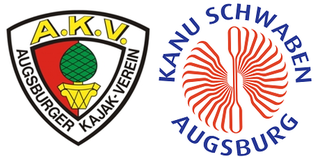 W
WThe Augsburg Eiskanal is an artificial whitewater river in Augsburg, Germany, constructed as the canoe slalom venue for the 1972 Summer Olympics in nearby Munich.
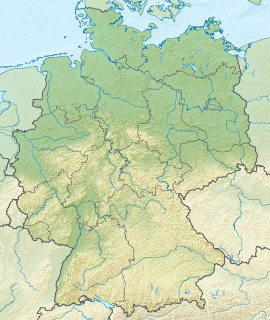 W
WThe Langer See is a lake situated in the south-eastern outskirts of Berlin, the capital city of Germany. The lake is aligned south-east to north-west and forms part of the course of the River Dahme. The Langer See is approximately 11 kilometres (6.8 mi) long, with an average width of 221 metres (725 ft) and an area of 2.43 square kilometres (0.94 sq mi).
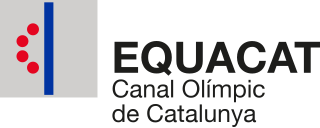 W
WThe Canal Olímpic de Catalunya is a canal located in Castelldefels, Catalonia, Spain. Constructed in 1991, it hosted the canoe sprint events for the 1992 Summer Olympics.
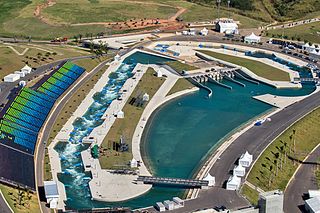 W
WThe Deodoro Olympic Whitewater Stadium is a whitewater paddling venue, constructed to host the canoeing and kayaking slalom events for the 2016 Summer Olympics in Rio de Janeiro. The stadium is part of the 'X-Park' sport complex located in Deodoro, Rio de Janeiro, Brazil.
 W
WDorney Lake is a purpose-built rowing lake in England. It is near the village of Dorney, Buckinghamshire, and is around 3 km west of Windsor and Eton, close to the River Thames.
 W
WGrünau is a German locality (Ortsteil) within the Berlin borough (Bezirk) of Treptow-Köpenick. Until 2001 it was part of the former borough of Köpenick.
 W
WHenley Royal Regatta is a rowing event held annually on the River Thames by the town of Henley-on-Thames, England. It was established on 26 March 1839. It differs from the three other regattas rowed over approximately the same course, Henley Women's Regatta, Henley Masters Regatta, and Henley Town and Visitors' Regatta, each of which is an entirely separate event.
 W
WNotre Dame Island is an artificial island in the Saint Lawrence River in Montreal, Quebec, Canada. It is immediately to the west of Saint Helen's Island and west of the Saint Lawrence Seaway and the city of Saint-Lambert on the south shore. Together with Saint Helen's Island, it makes up Parc Jean-Drapeau, which forms part of the Hochelaga Archipelago. To the southwest, the island is connected to the embankment separating the seaway and Lachine Rapids.
 W
WKasai Rinkai Park is a park in Edogawa, Tokyo, Japan, which officially opened on June 1, 1989. The park includes a bird sanctuary and the Tokyo Sea Life Park aquarium. It was built on reclaimed land which includes two manmade islands, an observation deck and a hotel. It is the second-largest park in the 23 wards of Tokyo.
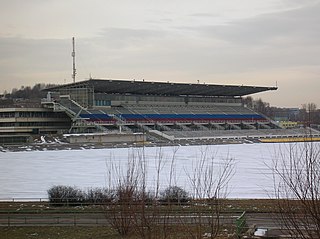 W
WThe Krylatskoye Rowing Canal is a canoe sprint and rowing venue located in the Krylatskoye Sports Complex in Moscow, Russia.
 W
WLake Albano is a small volcanic crater lake in the Alban Hills of Lazio, at the foot of Monte Cavo, 20 km (12 mi) southeast of Rome. Castel Gandolfo, overlooking the lake, is the site of the Papal Palace of Castel Gandolfo.
 W
WLake Casitas is a reservoir in Ventura County, California, built by the United States Bureau of Reclamation and completed in 1959. The project provides drinking water and water for irrigation. A secondary benefit is flood control.
 W
WLake Lanier is a reservoir in the northern portion of the U.S. state of Georgia. It was created by the completion of Buford Dam on the Chattahoochee River in 1956, and is also fed by the waters of the Chestatee River. The lake encompasses 38,000 acres (150 km2) or 59 square miles (150 km2) of water, and 692 miles (1,114 km) of shoreline at normal level, a "full pool" of 1,071 feet (326 m) above mean sea level and the exact shoreline varies by resolution according to the coastline paradox. Named for American poet Sidney Lanier, it was built and is operated by the U.S. Army Corps of Engineers for flood control and water supplies. It is patrolled by the Georgia Department of Natural Resources (GDNR), as well as local law enforcement.
 W
WLake Perris is an artificial lake completed in 1973. It is the southern terminus of the California State Water Project, situated in a mountain-rimmed valley between Moreno Valley and Perris, in what is now the Lake Perris State Recreation Area. The park offers a variety of recreational activities. Because of this and the lake's proximity to major population centers, it is very crowded during the summer months.
 W
WLake Sagami is an artificial lake located in Midori-ku, Sagamihara, Kanagawa in Japan's Kantō region. Created in 1947 after the Sagami River was dammed, it serves as use for recreational and hydroelectric purposes. The lake also served as venue for canoeing events at the 1964 Summer Olympics held in Tokyo, located 60 kilometres (37 mi) from the lake.
 W
WLee Valley White Water Centre is a white-water slalom centre, that was constructed to host the canoe slalom events of the London 2012 Olympic Games. On 9 December 2010, Anne, Princess Royal officially opened the venue which is owned and managed by Lee Valley Regional Park Authority. The £31 million project to construct the centre finished on schedule and was the first newly constructed Olympic venue to be completed.
 W
WThe Regattastrecke Oberschleißheim is a rowing venue situated in Oberschleißheim near München in Germany. It was built for the rowing and canoeing events of the 1972 Summer Olympics, and has since hosted numerous world rowing events.
 W
WThe Ocoee Whitewater Center, near Ducktown, Tennessee, United States, was the canoe slalom venue for the 1996 Summer Olympics in Atlanta, and is the only in-river course to be used for Olympic slalom competition. A 1,640 foot stretch of the Upper Ocoee River was narrowed by two-thirds to create the drops and eddies needed for a slalom course. Today, the course is watered only on summer weekends, 34 days a year, for use by guided rafts and private boaters. When the river has water, 24 commercial rafting companies take more than 750 raft passengers through the course each day.
 W
WThe Penrith Whitewater Stadium is located near Sydney, Australia. It is an artificial whitewater sporting facility which hosted the canoe/kayak slalom events at the 2000 Summer Olympics in Sydney. The facility is part of the Penrith Lakes Scheme, which is converting open-pit sand and gravel mines into lakes for recreation. It is close to Cranebrook and is adjacent to the Sydney International Regatta Centre. These lakes are not filled via the Nepean River, but are filled via rain water and ground water. The operation of the facility aerates the water and improves water quality in the flat water rowing and canoeing course.
 W
WRodrigo de Freitas Lagoon is a lagoon in the district of Lagoa in the Zona Sul area of Rio de Janeiro. The lagoon is connected to the Atlantic Ocean, allowing sea water to enter by a canal along the edge of a park locally known as Jardim de Alah.
 W
WRodrigo de Freitas Lagoon is a lagoon in the district of Lagoa in the Zona Sul area of Rio de Janeiro. The lagoon is connected to the Atlantic Ocean, allowing sea water to enter by a canal along the edge of a park locally known as Jardim de Alah.
 W
WThe Schinias Olympic Rowing and Canoeing Centre was built to host the rowing and canoe sprint events at the 2004 Summer Olympics in Greece.
 W
WThe Sea Forest Waterway is a regatta venue for rowing and canoeing, situated in Odaiba, Tokyo Bay, in Japan.
 W
WParc Olímpic del Segre is a canoeing and kayaking facility in La Seu d'Urgell, Catalonia, Spain, built in 1990 for use during the 1992 Summer Olympics in Barcelona.
 W
WThe Sepulveda Dam is a project of the U.S. Army Corps of Engineers designed to withhold winter flood waters along the Los Angeles River. Completed in 1941, at a cost of $6,650,561, it is located south of center in the San Fernando Valley, approximately eight miles east of the river's source in the western end of the Valley, in Los Angeles, California.
 W
WThe Shunyi Olympic Rowing-Canoeing Park was built for the rowing, canoeing and 10 km open-water swimming events in the 2008 Summer Olympics. It is located in Mapo Village in the Shunyi District in Beijing.
 W
WThe Sydney International Regatta Centre (SIRC), located in Penrith, Sydney, New South Wales, Australia, is a rowing and canoe sprint venue built for the 2000 Summer Olympics. It is now a popular sporting venue, with the Head of the River Regatta held annually.
 W
WThe Töölö Rowing Stadium is a rowing and canoeing venue located a kilometer from Helsinki Olympic Stadium in Helsinki, Finland.
 W
WLake Wendouree is an artificially-created and maintained shallow urban lake located adjacent to the suburb of the same name in the city of Ballarat, Victoria, Australia. The name Wendouree comes from a local Aboriginal word wendaaree which means 'go away': a story is told that when settler William Cross Yuille asked a local indigenous woman what the name of the swamp was, that was her reply.
 W
WXochimilco is one of the 16 mayoralities or boroughs within Mexico City. The borough is centered on the formerly independent city of Xochimilco, which was established on what was the southern shore of Lake Xochimilco in the precolonial period. Today, the borough consists of the eighteen “barrios”, or neighborhoods, of this city along with fourteen “pueblos”, or villages, that surround it, covering an area of 125 km2 (48 sq mi). The borough is in the southeastern part of the city and has an identity that is separate from the historic center of Mexico City, due to its historic separation from that city during most of its history. Xochimilco is best known for its canals, which are left from what was an extensive lake and canal system that connected most of the settlements of the Valley of Mexico. These canals, along with artificial islands called chinampas, attract tourists and other city residents to ride on colorful gondola-like boats called “trajineras” around the 170 km (110 mi) of canals. This canal and chinampa system, as a vestige of the area's precolonial past, has made Xochimilco a World Heritage Site. In 1950, Paramahansa Yogananda, in his Autobiography of a Yogi, wrote that if there were a scenic beauty contest, Xochimilco would get the first prize. However, the impacts of colonization as well as severe environmental degradation of the canals and chinampas have brought that status into question.